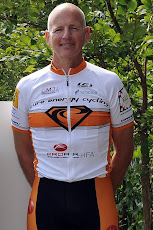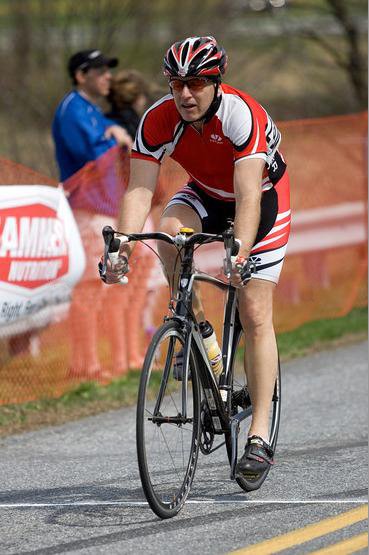
I don't have to tell you the benefits/merits of doing routine/weekly hill workouts...especially as the race season nears. Accept to say, if you're NOT doing them....you SHOULD BE!
Anyway, how do you know if you're doing your hill workouts correctly? Is there a correct intensity to train in the hills? Do I match my cardio-respiratory stress/pain with my muscle stress/pain? i.e. am I out of breath w/ legs burning. Or, do I treat them as Threshold or VO2max workouts based on how steep and how long they are? Well, I would say if you don't have a Power Meter the former suggestion would be the way to do it. Assuming, you can climb all four hills before falling off your bike. Forget the Heart Rate Monitor because by the time you crest the first hill...you're HR monitor is probably still playing catch-up. (it lags tremendously the harder the intensity). Now, if you do have a Power Meter..I would take a look at the hills (ahead of time) and see how long/steep they are..and estimate how long it would take you to get to the top. Then, base your ride/workout on that info. I'll use the file above as an example:
Hill #1- Fretz Mill Rd. Hill, is approx. 1/2 mile long, with 16% max grade.
Hill #2- Short Rd. Hill to Tollgate Rd., approx 3/4 mile long, with 16% max grade
Hill #3 & #4- Wismer Rd. Hill, approx. 1 mile long, with 14% max grade (repeat hill)
Hill #5 - Federal Twist Rd. Hill, approx 1.25 mile long, with 16% max grade
Hill #6- Strimples Hill Rd., approx. 1.5 miles long, with 10% max grade
Hill #7- Rt. 523 Hill, approx. 2 miles long, with 10% max grade
Hill #8- Rt. 179 Hill, approx. 1.5 miles long, with 6% avg. grade
Hill #9- Stoney Hill Rd., approx. 2.5 miles long, with 5% avg. grade
Hill #10- Holicong Rd. Hill, approx 1.5 miles long, with 10% max grade
Hill #11- Hansell Rd/Burnt House Rd/Fell Rd., approx 1.5 miles long, with 3% avg grade
So, looking at Hills #1-5, you can see that they're pretty steep (14-16% grade) and pretty short (up to a mile and a quarter). Therefore, it would make sense to me, physiologically speaking, to do a nice 4x4 VO2max (L5) workout. Except after reviewing my PM file, looks like I wimped out a bit and did them more at L4 (Threshold). That's ok though..live and learn.
Hills #6-#8, are not as steep but a little longer..therefore, I'd say this would be great for doing a 3x10 Threshold (L4) workout.
Hills #9-#11, could also be another 3x10 Threshold (L4) workout interval, but for me...it was a SURVIVAL interval. I was beat..toasted..spent..bonked..whatever! Over 3,000 ft. of climbing and 2.5 hrs. in the saddle...that's enough FUN for one day..at least for me it is. Cheers Rob











